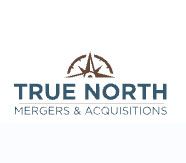What Is Normalized Net Working Capital?

True North Mergers & Acquisitions
October 29, 2024

Understanding the Fuel in the Tank of Every Business
In the complex world of mergers and acquisitions transactions, one financial term is integral but often misunderstood: Net Working Capital (NWC).
When determining your company's value, understand the definition of net working capital and why it will be part of the transaction value in most mergers and acquisitions. It also helps define what the transaction includes for the buyer and what you get to keep.
In today's competitive market, owners and buyers note that overlooking NWC can mean missing crucial aspects of a target company's operational function, free cash flow, and growth that can make or break a deal.
This blog post will not only clarify what NWC is but also point out key aspects you need to consider to maximize the value of a business.
The Importance of Net Working Capital
As a business owner, you're not just selling a company; you're selling a legacy. However, the business's value is a composite of non-tangible assets called "Goodwill," tangible assets such as furniture, fixtures, and equipment (FFE), and net working capital. Here's why you need to pay attention to net working capital:
- Enterprise Value: A properly calculated NWC is a transaction price component and part of your business's tangible assets.
- Smooth Transition: Ensuring adequate working capital means the business can operate seamlessly once the owner exits and still meet short-term obligations like payroll and accounts payable after closing the sale (which buyers require).
- Negotiate with Confidence: calculating NWC according to GAAP (Generally Accepted Accounting Principles) and setting a "Peg" or forecasted amount takes this issue out of the negotiations.
What Exactly Is Net Working Capital?
At its core, Net Working Capital measures your company's short-term financial health. Think of it as the lifeblood of a business or the fuel in the tank that keeps the business going. In most M&A transactions, it's typically included in the purchase price to ensure the company can continue operating smoothly post-transaction without immediate cash flow disruptions. Current assets include accounts receivable and inventories of raw materials and finished goods. In contrast, current liabilities include accounts payable and short-term debts (e.g., bank lines of credit and credit cards).
To spell it out more simply:
- The basic formula NWC = Current Assets - Current Liabilities.
However, in M&A transactions, a more specific formula is often used:
- NWC = Current Assets (excluding cash) - Current Liabilities (excluding debt)
Remember, it's not just about mere numbers and formulas; it's about ensuring the business has the liquidity it needs to thrive as negotiated for thirty, sixty, or ninety days.
Normalizing NWC
NWC is typically normalized using a trailing twelve-month (TTM) average to account for seasonal fluctuations and financial abnormalities. This provides a more accurate representation of the business's typical working capital needs. This normalization is crucial because buyers value the transaction based on the company's past performance, of which accounts receivable and inventory purchases are critical indicators of the business's operational and financial health.
Key Considerations for NWC When Selling Your Business
NWC is typically normalized using a trailing twelve-month (TTM) average to account for seasonal fluctuations, cycles, and financial abnormalities. A TTM average provides a more accurate representation of the business's actual working capital needs. This normalization is crucial because buyers value the transaction based on the company's past performance, of which accounts receivable and inventory purchases are critical indicators of the business's operational and financial health.
1. Define It Clearly
Don't miss the opportunity to add the calculation definition of NWC in the Letter of Intent (LOI). NWC ambiguity can lead to disputes and potentially cost more money. We typically recommend following the GAAP definition for calculating NWC, but be specific!
2. Set the "Peg"
The seller and buyer must agree on a target or "Peg" to serve as a closing statement benchmark. A well-defined Peg can protect you from unexpected additional cash adjustments if the actual NWC, as stated on the closing Balance Sheet, is less than the Peg. Alternatively, the seller may remit a surplus if the actual NWC exceeds the agreed Peg.
3. Understand Cash-Free/Debt-Free Transactions
In a Cash-Free/Debt-Free transaction, the seller usually keeps the cash. The long-term debt or funded indebtedness (debt the business uses to finance over the longer term) is excluded from the calculation and typically is retired or paid off at the closing of the sale of the company by the seller. Knowing this can help you negotiate better terms.
4. True-up Period
After closing, be prepared for adjustments, typically taking 60-90 days to true-up or finalize NWC calculations according to the PEG or closing balance sheet. Be ready for potential adjustments based on actual figures—this could mean extra cash in your pocket or a slight reduction in proceeds.
Take Charge of Your Sale!
Understanding and leveraging net working capital is not just an option; it's essential for any owner looking to sell successfully.
Ready to take the next step? Reach out to Michael Hubsmith, President at True North Mergers and Acquisitions. Michael can help guide you through every aspect of the sale process, ensuring you maximize your NWC's impact and that nobody leaves money on the table.
Subscribe to our Newsletter
Sign up for the latest industry insights from True North Mergers & Acquisitions.




